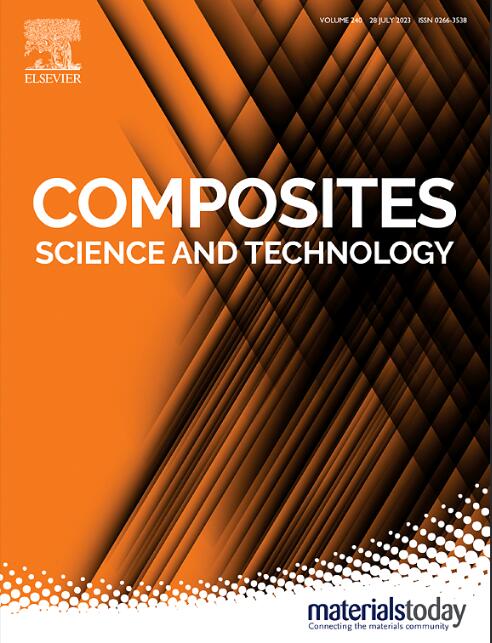动态聚二硫化物辅助原位还原和包封纳米银制备坚固的光热抗菌复合纺织品
IF 8.3
1区 材料科学
Q1 MATERIALS SCIENCE, COMPOSITES
引用次数: 0
摘要
开发具有高效和持久抗菌性能的纺织品对于减轻医疗交叉感染和满足日益增长的公共卫生需求至关重要。本文展示了一种有效的方法,通过动态聚二硫化物辅助原位还原和纳米银的封装来制备具有强大抗菌性能的生物相容性复合纺织品。通过γ-氨基丙基三乙氧基硅烷与α-硫辛酸(ALA)序接枝,在棉花表面建立了还原平台。随后,利用ALA单元内的氨基和动态生成的巯基来启动银离子的还原,而无需额外的还原剂,从而在纤维表面形成稳定的抗菌基质层。由此产生的织物具有持久的抗菌性能,即使经过50次标准洗涤,也能达到99.99%的抗菌和抗真菌功效。值得注意的是,纳米银粒子的沉积使棉织物具有显著的光热转化能力,并有利于多种杀菌自由基的产生。这些特性使织物表面的细菌和真菌在100毫瓦/平方厘米照射10分钟内有效根除。此外,光热抗菌织物保留令人满意的固有耐磨性和生物相容性。目前的工作为开发坚固耐用的抗菌纺织品提供了另一种选择。本文章由计算机程序翻译,如有差异,请以英文原文为准。

Dynamic polydisulfide-assisted in-situ reduction and encapsulation of nanosilver for fabricating robust photothermal antimicrobial composite textiles
The development of textiles with efficient and long-lasting antimicrobial properties is critical for mitigating medical cross-infections and addressing the growing demands of public health. Herein, an effective approach was demonstrated to fabricate biocompatible composite textiles with robust antimicrobial properties, through dynamic polydisulfide assisted in-situ reduction and encapsulation of nanosilver. Specifically, a reductive platform was established on cotton surfaces by sequentially grafting γ-aminopropyl triethoxysilane and α-lipoic acid (ALA). Subsequently, the amino groups and the dynamically-generated sulfhydryl groups within ALA units were utilized to initiate the reduction of silver ions without the need for additional reductants, thereby forming a stable antibacterial matrix layer on the fiber surface. The resulting fabric exhibits durable antimicrobial properties, achieving a 99.99 % antibacterial and antifungal efficacy even after 50 cycles of standard laundering. Notably, the deposition of silver nanoparticles endows the cotton fabric with significant photothermal conversion ability, and facilitates the generation of multiple bactericidal free radicals. These properties enable the effective eradication of bacteria and fungi on the textile surface within 10 min of irradiation with an intensity of 100 mW/cm2. Furthermore, the photothermal antimicrobial fabric retains satisfactory inherent wearability and biocompatibility. The present work provides an alternative for developing robust and durable antimicrobial textiles.
求助全文
通过发布文献求助,成功后即可免费获取论文全文。
去求助
来源期刊

Composites Science and Technology
工程技术-材料科学:复合
CiteScore
16.20
自引率
9.90%
发文量
611
审稿时长
33 days
期刊介绍:
Composites Science and Technology publishes refereed original articles on the fundamental and applied science of engineering composites. The focus of this journal is on polymeric matrix composites with reinforcements/fillers ranging from nano- to macro-scale. CSTE encourages manuscripts reporting unique, innovative contributions to the physics, chemistry, materials science and applied mechanics aspects of advanced composites.
Besides traditional fiber reinforced composites, novel composites with significant potential for engineering applications are encouraged.
 求助内容:
求助内容: 应助结果提醒方式:
应助结果提醒方式:


